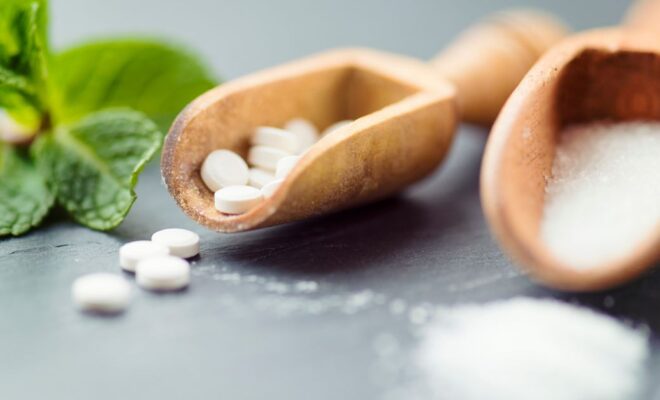Understanding The Physiology Of Milk Production: Insights Into Breastfeeding And Milk Supply Dynamics

Breastfeeding is a beautiful and natural process that provides numerous benefits to both mother and baby. However, many new mothers struggle with milk supply and may feel overwhelmed and discouraged. Understanding the physiology of milk production is critical to addressing these concerns and ensuring a successful breastfeeding journey.
Anatomy Of The Breast And Mammary Glands
Understanding breast and mammary gland anatomy is crucial for grasping milk production. The breast contains glandular, fat, and connective tissues, with mammary glands responsible for milk synthesis. These glands comprise clusters of milk-producing cells called alveoli, surrounded by myoepithelial cells that contract to release milk into the ducts. The ducts transport milk to the nipple for breastfeeding.
The number of alveoli varies among women, with more alveoli potentially increasing milk production capacity. Additionally, the breast undergoes significant changes during pregnancy and breastfeeding to prepare for milk production and delivery.
Hormones Involved In Milk Production
Hormones are vital in regulating milk production, with prolactin and oxytocin being the primary players. Prolactin stimulates milk production, while oxytocin triggers the let-down reflex, allowing milk to flow. During pregnancy, prolactin levels rise to prepare the mammary glands. After childbirth, the baby’s suckling stimulates prolactin release, increasing milk production. Simultaneously, oxytocin is released, causing the alveoli to contract and release milk into the ducts.
Stress and certain medications can disrupt the production and release of these hormones, impacting the milk supply. A calm, supportive breastfeeding environment can help optimize hormone levels and enhance milk production.
Stages Of Lactation
Lactation occurs in stages, each with distinct characteristics. The first stage is colostrum, a thick, yellowish fluid produced shortly after childbirth. It is rich in antibodies and essential nutrients for the baby’s protection and nourishment.
A few days later, colostrum transitions to mature milk, which is thinner and whiter. It is perfectly balanced in fat, carbohydrates, and protein to meet the baby’s nutritional needs and adjusts as the baby grows.
New mothers should note that this transition can take a few days, and frequent, on-demand feeding is crucial for establishing a healthy milk supply and ensuring the baby receives adequate nourishment.
Factors Affecting Milk Supply
Milk supply and production are influenced by several factors, primarily the demand-supply relationship: the more effectively and frequently a baby feeds, the more milk is produced. Therefore, mothers should breastfeed on demand instead of following strict schedules.
A proper latch is also crucial for efficient milk transfer and stimulation of production. Poor latching can hinder milk removal and reduce supply, making it helpful to consult a lactation consultant.
Feeding frequency matters as well. Breastfeeding should begin shortly after childbirth, with newborns fed 8 to 12 times daily. While the frequency may decrease as the baby grows, maintaining regular breastfeeding sessions is essential for sustaining milk supply.
Supply And Demand Dynamics In Breastfeeding
Breast milk production operates on a supply-and-demand basis. The more milk removed from the breast, the more milk the body produces. This means the milk supply can decrease if the baby is breastfeeding infrequently and effectively.
Understanding this supply-demand dynamic is crucial in troubleshooting milk supply issues. If a mother is concerned about a low milk supply, increasing the frequency of breastfeeding or pumping can help stimulate milk production. It is important to remember that the more milk the body is asked to produce, the more it can supply.
Common Challenges In Milk Production And Breastfeeding
Many new mothers face challenges with milk production and breastfeeding:
- Engorgement: This occurs when the breasts become overly full and swollen, making latching difficult and potentially leading to decreased milk supply if not addressed.
- Nipple Pain: Often caused by an improper latch, sore nipples can be relieved with lanolin cream or breast milk. Seeking help to ensure proper latching is crucial.
- Low Milk Supply: Factors like stress, certain medications, or medical conditions can contribute to low supply. Support from a lactation consultant or healthcare provider can help identify the cause and create a plan to increase milk production.
Tips For Increasing Milk Supply
If a mother is concerned about a low milk supply, several evidence-based strategies can help increase production. One effective method is frequent breastfeeding or pumping; the more milk removed from the breasts, the more the body will produce.
Breast compression is another helpful technique, which involves gently squeezing the breast while the baby is feeding to encourage milk flow. This can help increase milk intake and stimulate the breasts to produce more milk.
Additionally, proper nutrition and hydration are essential for milk production. A well-balanced diet and staying adequately hydrated can support the milk supply. Some herbs and supplements, such as fenugreek or blessed thistle, may also be beneficial, but it is essential to consult a healthcare provider before using them.
Participating in online parent classes can also provide valuable support and guidance. They help mothers learn more about breastfeeding techniques and nutrition, enhancing their confidence and ability to manage their milk supply effectively.
Understanding The Role Of Pumping And Milk Expression
Pumping and milk expression play a crucial role in breastfeeding and milk supply. They enable mothers to store milk for later use and stimulate milk production when direct breastfeeding isn’t possible.
Choosing the right breast pump type and size is essential for effective milk removal. Proper techniques, including the correct suction level and a regular pumping schedule, help maximize milk production. Additionally, hand expression and breast massage can increase supply and relieve engorgement by enhancing milk removal and stimulating production.
Conclusion
Understanding milk production physiology is essential for new mothers and healthcare providers. Recognizing the hormones and structures helps mothers optimize their milk supply and troubleshoot issues.
Demand, feeding frequency, and the baby’s latch affect production. Strategies such as frequent breastfeeding, proper latching, and good nutrition can enhance supply.
Each breastfeeding journey is unique, and challenges may arise. Support from lactation consultants and healthcare providers offers valuable guidance. Ultimately, understanding milk production empowers mothers to embrace breastfeeding and strengthen their bond with their babies.






